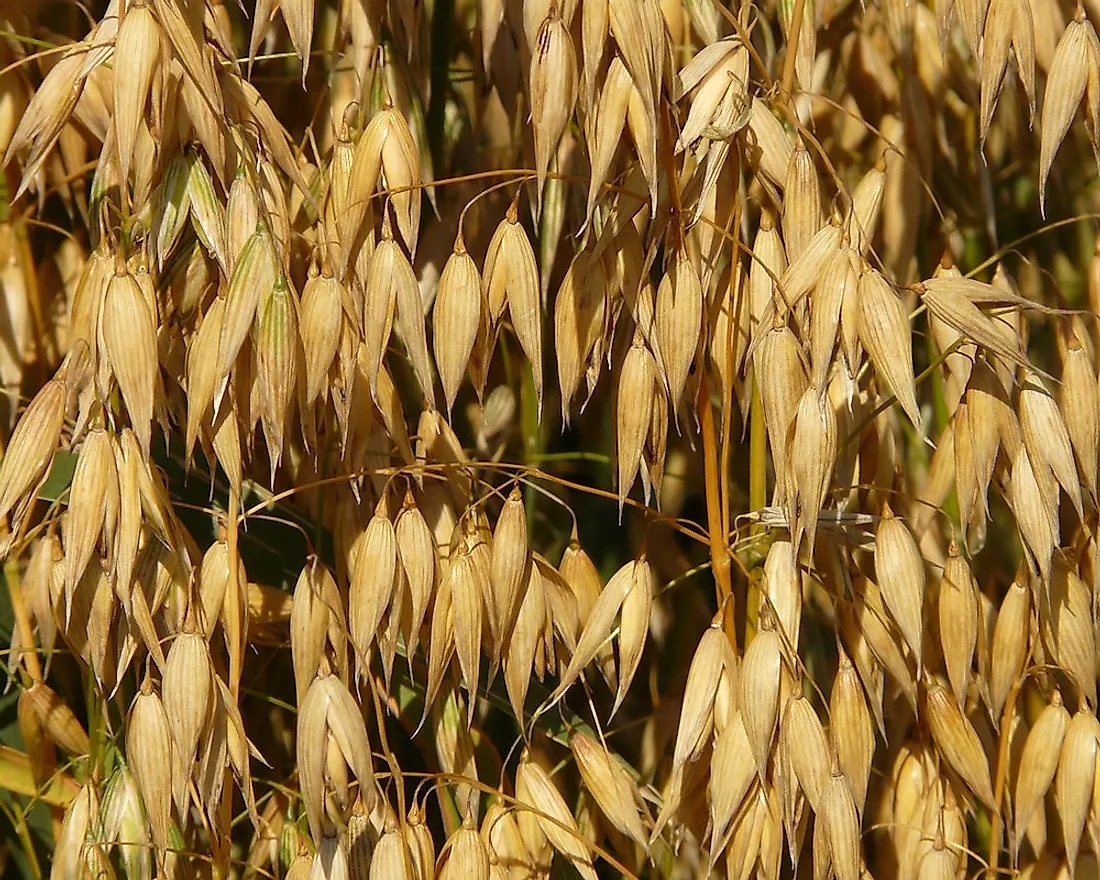The Top Oat Producing Nations In The World

What Are Oats?
Oat is a species of cereal grain grown for its seeds. Oats are hardy cereal grains which can withstand poor conditions which may otherwise prove a challenge for some cereal crops to thrive. Oats is considered as a secondary crop, that is, it are derived from the weed of primary cereal domesticates. The cereal grain is among the healthiest grains in the world and is recommended to people who are suffering certain conditions such as low blood sugar and chronic heart diseases. Oat groats are the whole form of oats which take a longer time to cook than the processed oats. Oats are eaten for breakfast as oatmeal which is prepared by boiling oats in milk or water.
Uses Of Oat
Oats can be considered for several uses as food. They can be rolled or crushed to form the oatmeal which is taken like porridge for breakfast or baked into foods such as oatcakes, cookies, and bread. Oats can also be grounded to get the oat flour which can also be used in baking. Oat bread is still held in high esteem as a mainstay diet. Like barley and rice, oats are also used in Scotland as a soup thickener. Oats are also used as feeds, especially for horses for extra carbohydrates and the boost their energy. Winter oats are grown off-season as cover crops and during spring as green fertilizers. Cattle can also graze directly on oat plants as they provide good pasture. Oat Straws are important for breeding livestock, particularly cattle and horses. Oat can be used in brewing beer such as oat malt. Avena drink is also made using ground oat and milk and is a popular drink in Latin America. Oat grass has been used for decades as traditional medicine, especially in balancing the menstrual cycle while oat extract has been used to soothe skin condition.
Cultivation Of Oats
Oats are planted in the spring or early summer in cooler areas to avoid the summer heat which makes the oats go dormant. Oats can tolerate cold conditions and are unaffected by late frost or snow. Phosphate and urea fertilizers are sufficient for oats for their height, straw quality, and height. Vigorously growing oats tend to chock weeds. Thus only tall broadleaf weeds may need to be controlled by use of herbicide to improve the yields and make harvesting easier. Oats are largely disease-resistant, but leaf disease such as leaf rust may occur. Harvesting is done when the kernels have reached 35% moisture or when the green kernels are beginning to turn cream in color. Harvesting is done by swathing. The swathed plants are then put into windrows then left to dry for several days before they can be combined using pickup header.
Top Oat Producers
Russia is the world’s top oat producer accounting for over 20% of the world production. In 2013, it produced 4.02 million metric tons of oats. Canada and Poland are also some of the major oat producers accounting for 2.7 million and 1.4 million metric tons of the world’s production during the same year. Finland and Australia which produced 1.15 million and 1.05 million metric tons respectively completed the top five oat producers in the world. These top five countries accounted for almost 50% of the oats produced worldwide in 2013.
The Top Oat Producing Nations In The World
| Rank | Country | Production (Thousand Metric Tons), 2013 |
|---|---|---|
| 1 | Russia | 4,027 |
| 2 | Canada | 2,680 |
| 3 | Poland | 1,439 |
| 4 | Finland | 1,159 |
| 5 | Australia | 1,050 |
| 6 | United States | 929 |
| 7 | Spain | 799 |
| 8 | United Kingdom | 784 |
| 9 | Sweden | 776 |
| 10 | Germany | 668 |
| 11 | World Total | 20,732 |











